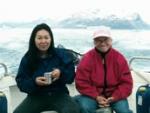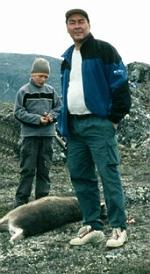Trade and Exchange in Greenland
The Steatite Objects Analyses Project 2005-07
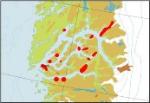
This summer the first phase of the joint Greenlandic/Danish/German/Swedish initiative called S.O.A.P. carried out in the Nuuk area. The initiative is one of the sub-projects under the International Polar Year project "Dynamics of Social Strategies in Arctic Environments: Long Term Perspectives on Movement and Communication" (IPY Activity ID #6). The project is furthermore one of only two humanities project mentioned in the recent Danish IPY-folder.
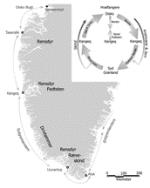
While taking its point of departure in an archaeological investigation of the Nuuk areas renowned (but under-documented) steatite quarry-sites the ambition is to bring to together the substantial historical and ethnographical source material in developing a number of solidly founded models for the historical trade and exchange in soapstone, and their imprint in the archaeological record. On the basis of these models we intend re-examine the large prehistoric soapstone material found on sites both inside and outside the Nuuk-area.
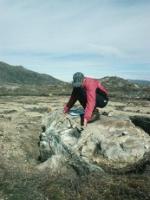
15 discrete soapstone quarry-sites were visited, recorded and sampled for geological provenance analyses. Four of these sites were archaeologically unknown prior to the trip. The newfound quarry-sites have tentatively been called; Clemens Q-site, Mikkel Q-site, Mariane Q-site and Uummannaq SE-site.
Five of the soapstone-formations are situated within a few hundred metres of a very promising dwelling site with archaeological remains ranging in time from the Saqqaq-periode until the 1950s, situated at the shore of the Kangersuneq Icefiord. The dwelling-site shows substantial remains of having been used the major place for transforming the soapstone preforms into finished objects.
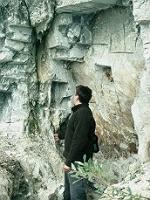
The S.O.A.P. groups are headed by:
Martin Appelt, Research fellow, SILA – The Greenland Research Centre at the National Museum of Denmark
Bjarne Grønnow, Head of SILA – The Greenland Research Centre at the National Museum of Denmark
Clemens Pasda, Professor, Friederich-Schiller-Universität (Jena), Germany
Mikkel Myrup, Curator, The National Museum & Archives of Greenland
Yvon Csonka, Professor, University of Greenland/Ilisimatusarfik
Lars Larsson, Professor, University of Lund, Sweden
Further reading
"Speckstein als prähistorisches Exportprodukt" [Soapstone as a Prehistoric Export Commodity] via Friedrich-Schiller-Universität Jena (in German).
Philbert, Poul-Erik, "Fra fedtstensbrud til køkkenmødding" [Soapstone from Quarry-site to Middenarea], in: Polarfronten no. 3/2005 (in Danish).


